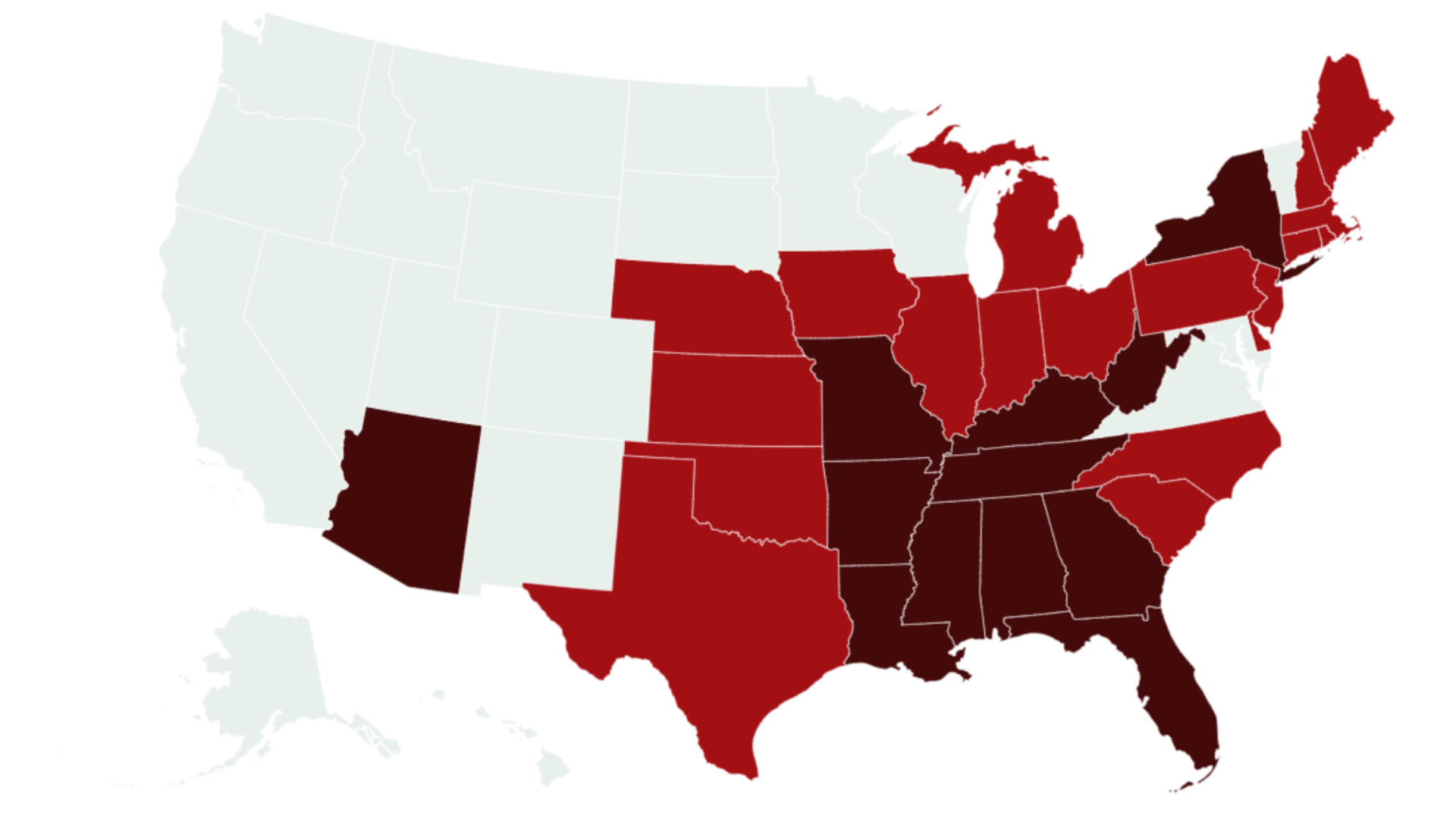
Millions of Americans across 31 states have been warned to stay inside as temperatures continue to soar—in some areas as high as 120 degrees Fahrenheit .
The National Weather Service (NWS) issued extreme heat warnings and heat advisories covering a vast expanse of the country, warning there was a “significant threat” in some regions.
Why It Matters
Extreme heat poses particular risk to vulnerable populations, such as older adults, young children, and those with certain medical conditions and is responsible for around 700 deaths a year, according to the Centers for Disease Control and Prevention (CDC).
The Occupational Safety and Health Administration (OSHA) has also warned of the potentially lethal risk of extreme heat to those who work in warm environments, either inside or outside.
What To Know
The weather alerts stretched from the Southern Plains and Southeast up through portions of the Midwest and Northeast.
The 31 affected states include:
- Alabama (Extreme Heat Warning)
- Arizona (Extreme Heat Warning)
- Arkansas (Extreme Heat Warning)
- Connecticut (Heat Advisory)
- Delaware (Heat Advisory)
- Florida (Extreme Heat Warning)
- Georgia (Extreme Heat Warning)
- Illinois (Heat Advisory)
- Indiana (Heat Advisory)
- Iowa (Heat Advisory)
- Kansas (Heat Advisory)
- Kentucky (Extreme Heat Warning)
- Louisiana (Extreme Heat Warning)
- Maine (Heat Advisory)
- Massachusetts (Heat Advisory)
- Michigan (Heat Advisory)
- Mississippi (Extreme Heat Warning)
- Missouri (Extreme Heat Warning)
- Nebraska (Heat Advisory)
- New Hampshire (Heat Advisory)
- New Jersey (Heat Advisory)
- New York (Extreme Heat Warning)
- North Carolina (Heat Advisory)
- Ohio (Heat Advisory)
- Oklahoma (Heat Advisory)
- Pennsylvania (Heat Advisory)
- Rhode Island (Heat Advisory)
- South Carolina (Heat Advisory)
- Tennessee (Extreme Heat Warning)
- Texas (Heat Advisory)
- West Virginia (Extreme Heat Warning)
According to the NWS, forecasts indicated daytime high temperatures could climb well above seasonal averages, with heat indexes—measurements combining air temperature and humidity—expected to reach dangerous levels.
Extreme heat exposure can have a wide range of impacts on health in the long term. “We often see increases in cardiovascular disease and kidney disease with exposure to extreme heat,” Jaime Madrigano, a professor of American health at the Johns Hopkins Bloomberg School of Public Health, Maryland, told Newsweek.
She added that respiratory disease is also “linked to heat exposure and one thing to keep in mind is that high temperatures can contribute to a buildup of harmful pollutants in the air.”
“There have also been studies that have shown that extreme heat exposure is associated with poor reproductive outcomes, like pre-term birth, and even mood and anxiety disorders,” Madrigano said.
The NWS advised those in affected states to stay indoors, while limiting time outdoors, to reduce strenuous activities, stay hydrated, and check on vulnerable relatives and neighbors.
Madrigano said that if people don’t have access to air conditioning at home, “many communities set up community cooling centers in libraries or other accessible locations.” She also recommended wearing loose, lightweight clothing and “minimizing outdoor activities.”
OSHA also has guidance on its website for employers of those who work in hot environments. Key recommendations include providing regular breaks in shaded or air-conditioned environments and hydration. Rescheduling strenuous activities to early morning or evening is also advised.
What People Are Saying
Jaime Madrigano, a professor of American health at the Johns Hopkins Bloomberg School of Public Health, Maryland, told Newsweek: “It is concerning because heat isn’t just uncomfortable, it can be hazardous to your health and even deadly. We know that June brought above-average temperatures, compared to what we normally see for that time of year, across the country. And many of those same places are getting hit again. The National Oceanic and Atmospheric Administration has already predicted that the month of July will be hotter than average.”
She added: “Classic signs of heat exposure include heat cramps, heat exhaustion and heatstroke, which is potentially fatal; and these are all related to the body overheating. But it’s important to note that those conditions which people most often think of as associated with heat exposure are just a small portion of the health impacts that we see when we look carefully at data from an extreme heat event.”
What Happens Next
The NWS issues regular forecast updates on its website.




